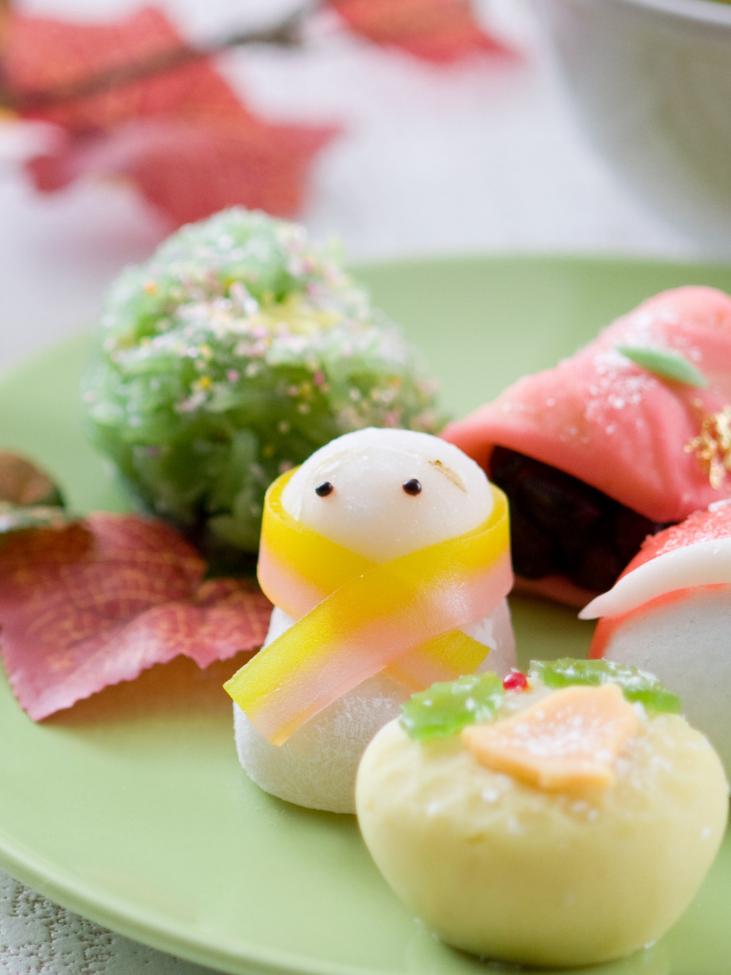Wagashi is transliterated into Vietnamese as Hoa qua tu, meaning “natural beauty”. Wagashi is the general name for traditional Japanese confectionery, used to distinguish it from Western confectionery Yogashi. From fresh, natural ingredients, applying traditional baking techniques, Wagashi artisans always passionately convey emotions, show off creativity and decorate Wagashi, turning them into fragrant, colorful flowers in the Japanese culinary paradise.
To appreciate Wagashi, you must enjoy it with all five senses: hear its name with your ears, see it with your eyes, touch it with your hands, smell it with your nose, and taste it with your mouth. It seems that the whole spirit of Japan is hidden in this type of cake.
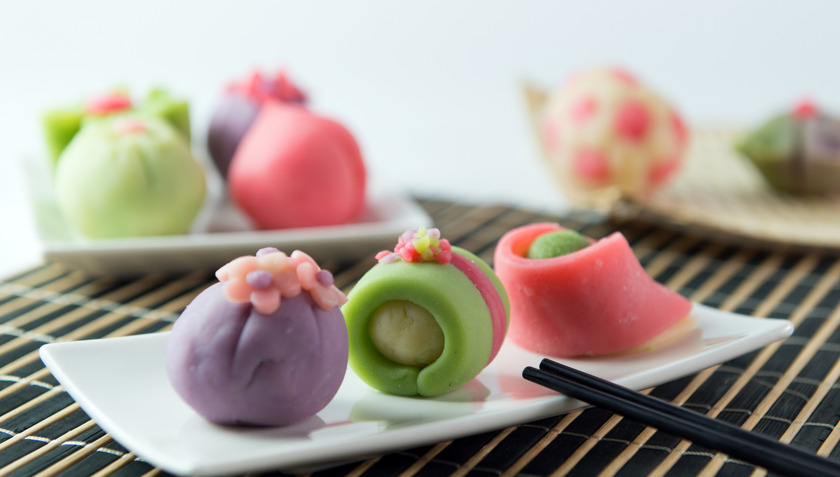
“Each season has its own food”, Wagashi is not only made from seasonal ingredients, but also elaborate works of art.
The ingredients to make Wagashi cakes are glutinous rice flour, fruits and red bean paste. The appearance of the cake has helped the Japanese people's tea parties become more rich and meaningful. According to some documents, the origin of this cake dates back to the Jomon period (14,000 BC - 300 BC), when Japanese people used rice, beans and fruits to make cakes to worship the gods. Over the centuries, Wagashi has developed and changed over time, bearing the cultural and historical imprint of each dynasty.
Spring is marked by Sakura Mochi, a cherry blossom-shaped rice cake filled with red bean paste, symbolizing new beginnings and fragile beauty. Summer is Mizugashi, a cool fruit-flavored jelly that helps cool the body in hot weather. Autumn is Kaki no Yokan, a persimmon-shaped red bean jelly cake symbolizing abundance and a bountiful harvest in autumn.
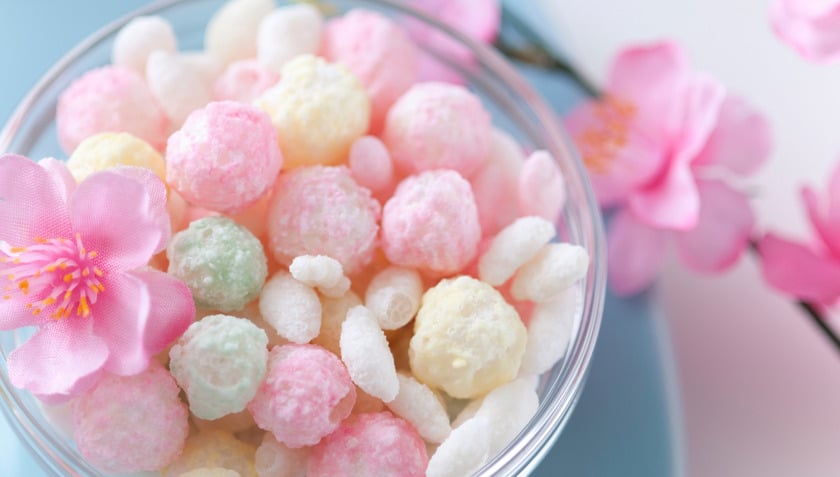
Wagashi constantly changes shape and color, sometimes turning into a blooming cherry blossom.
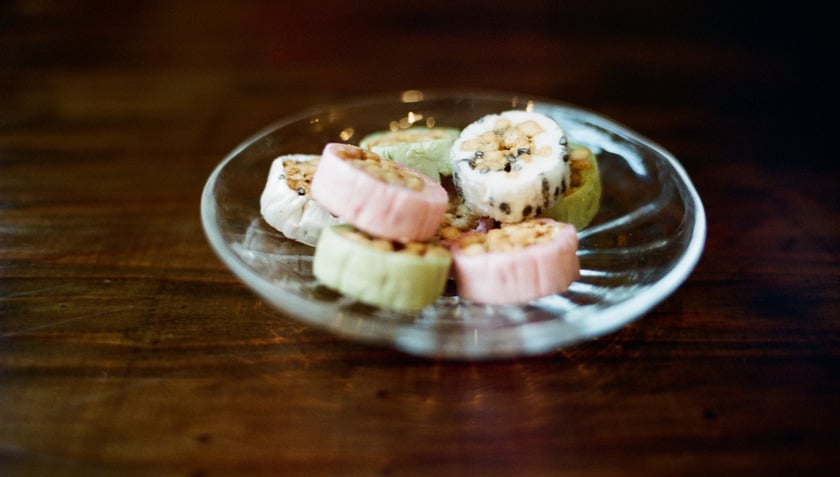
In Wagashi, the vividness seems to encapsulate the vastness of the world into an incredibly small cake.
Finally, the winter favorite chewy Uiro rice cake comes in many different flavors like green tea, cherry blossom… bringing a warm and sweet feeling on cold days.
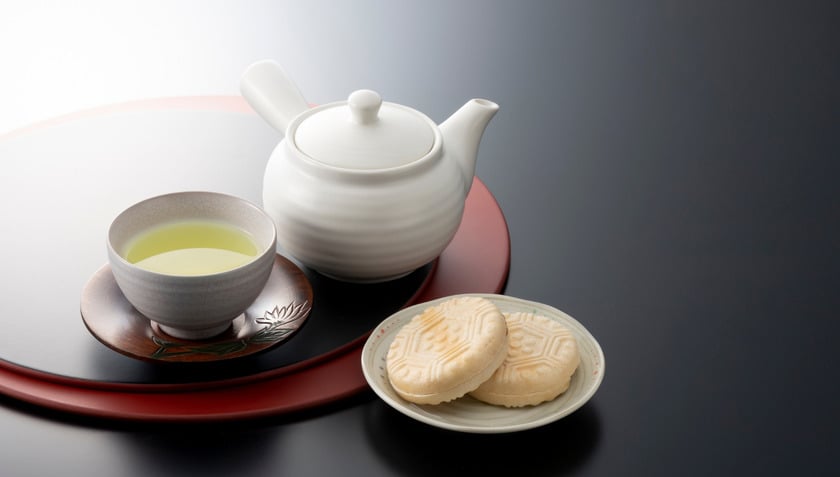
Wagashi is no longer just a dish, but has become an attractive cultural feature of Japan.
Because Wagashi is made from beans, grains, seaweed and dried cardamom, traditional ingredients, the connoisseur can feel the pure natural taste with a light, cool sweetness that melts on the tip of the tongue. Not only that, when holding the cake in your hand, you will feel the softness, moisture, crispness when cut, feel the cake melt in your mouth, all giving you a fresh feeling and the uniqueness of a culinary work.

Over time, Wagashi cakes have sometimes been influenced by foreign cultures, but overall, they have retained their own Japanese cultural traits.
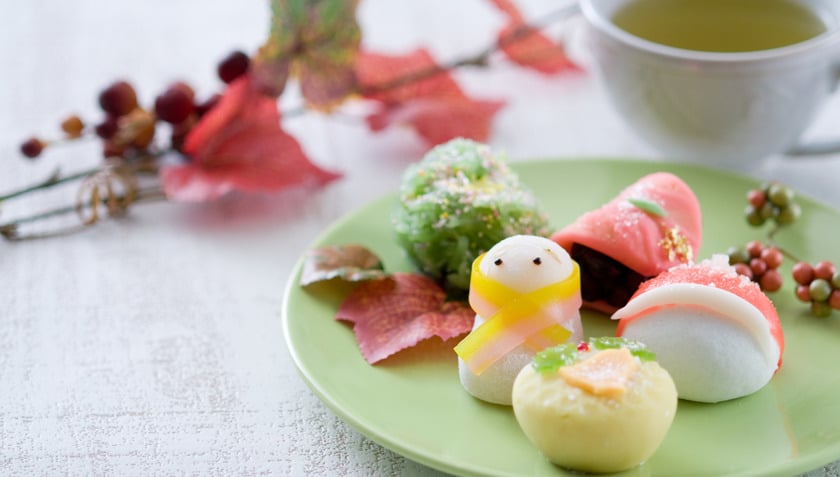
Japanese people have a very deep aesthetic concept, so beauty becomes the top standard in all areas of Japanese life.
Each type of Wagashi has its own unique flavor and shape. Gradually, more and more attractive cakes are created, even according to each month of the year. This type of cake is often divided into small groups, which can be called Namagashi. This group includes fresh cakes with a moisture content of over 30%. Namagashi has special processing forms such as Mochi (Mochimono), steamed cakes and fried cakes. In which, Mochi cakes are cakes whose main ingredients are glutinous rice or rice processed according to the Mochi cake making method.
There is also Hannamagashi, which is a type of cake with a moisture content of about 10 - 30%. Hannamagashi has two special processing forms: Anmono and Okamono, in which Anmono are cakes with a rather thin outer shell, the attractive point lies in the mashed bean paste (An) filling, while Okamono is a type of cake with a combination of ingredients processed independently.
So if you have the opportunity to visit this country at any time, do not miss the delicious and eye-catching "flower cake". Enjoying Wagashi is not only to satisfy your sweet craving but also to feel the sophistication of Japanese nature and culture.





